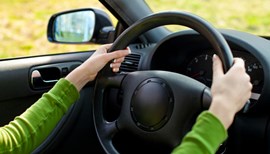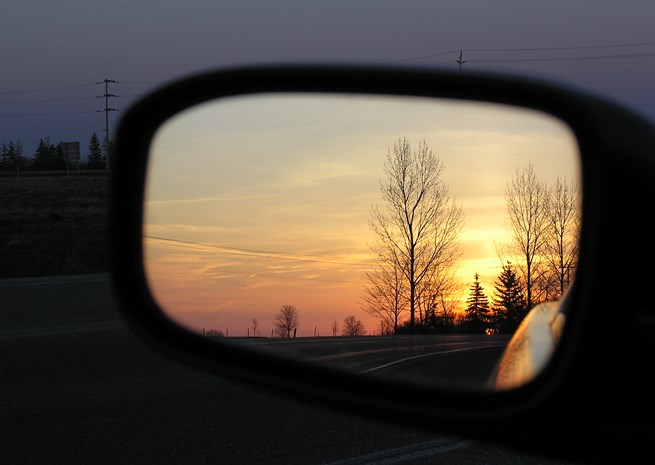 The chances are, you adjust your side mirrors the way whoever taught you how to drive told you to do it, blissfully unaware of the controversy that has been raging through the motoring world ever since 1995. That is when George Platzer, an engineer from the USA, wrote his technical paper entitled The Geometry of Automotive Rearview Mirrors – Why Blind Zones Exist and Strategies to Overcome Them.
The chances are, you adjust your side mirrors the way whoever taught you how to drive told you to do it, blissfully unaware of the controversy that has been raging through the motoring world ever since 1995. That is when George Platzer, an engineer from the USA, wrote his technical paper entitled The Geometry of Automotive Rearview Mirrors – Why Blind Zones Exist and Strategies to Overcome Them.
The gist of the controversy is the following question: Should the sides of the car be visible in the side mirrors or not?
The “no car in the mirror” camp
The 1995 paper says you as the driver should not see any part of your car in side mirrors. Achieving this requires just a little gymnastics. Sit in the driver’s seat with your head against the right window and set the right side mirror so you can barely see your car in it. Then, still in driver’s seat, lean so that your head is in line with the centre of the dashboard and keep turning the left side mirror outwards until you barely see the side of the car in it.
The idea is that with such a set up a vehicle driving behind us is always in one of your car’s mirror: the moment that vehicle leaves your rear view mirror it appears in your side view mirror; when it leaves your side view mirror, it appears in your peripheral vision through the side window. The proponents of this school of thought say that the result is the elimination of blind spots, that bane of all drives (blind spots are areas on either side of a car that are invisible to the driver when his head is positioned to face the area straight ahead).
The “old way is the best way” camp
According to the representatives of the other, traditional school of thought, you as the driver need to see a small bit of your car in side mirrors. This is in order to get perspective and context which enables you to understand the positioning of your car in relation to the world around you. Without this context, they say, it is difficult to judge the placement of your car in relations to the centre and the edge of the road; it is difficult to discern whether a car coming up behind you is in the next lane or two lanes away from you; and it is difficult to tell how far your car is from surrounding objects when reversing or parallel parking.
To adjust your side mirrors the traditional way, sit in the driver’s seat, looking straight ahead, and keep swivelling the mirrors until you can see a little bit of the car in both the left and the right side mirror by just throwing your glance this way and that way, without turning your head.
Conclusion
Believe it or not, the discussion between the two camps can get rather heated, with each group threatening the other with dire consequences (in the form of road accidents) unless they mend their ways.
The few participants in the discussion who managed to keep a cool head say that the position of side mirrors is to an extent a matter of personal preference. They do warn, however, that wide setting takes some getting used to and can make the driver feel disoriented for a period of time.
As to whether wide setting eliminates blind spots, the predominant verdict is: not really. You may need to turn your head less, but you still need to turn it. No matter how you adjust your side mirrors, there’s no replacement for shoulder-check when it comes to changing lanes safely.









